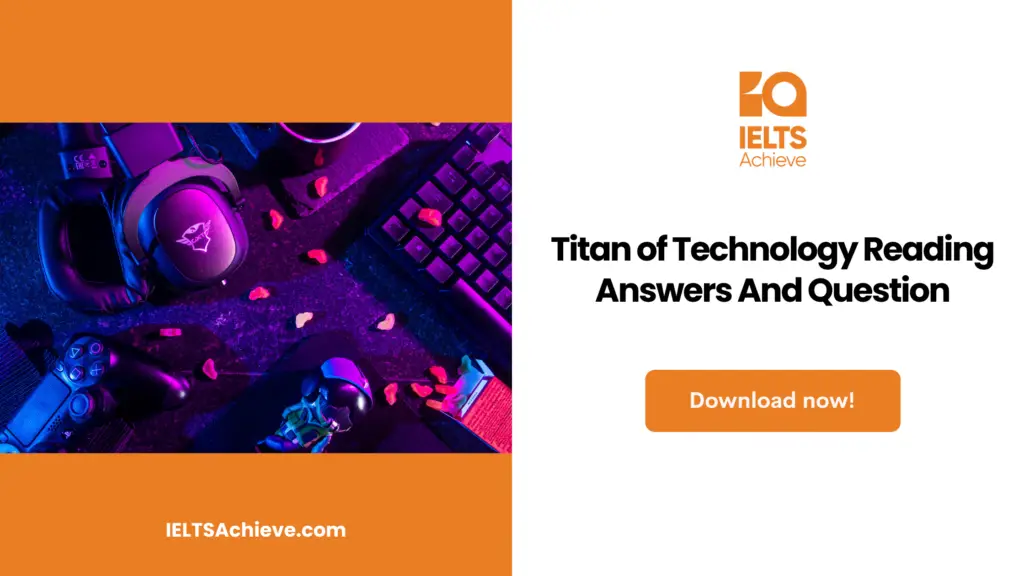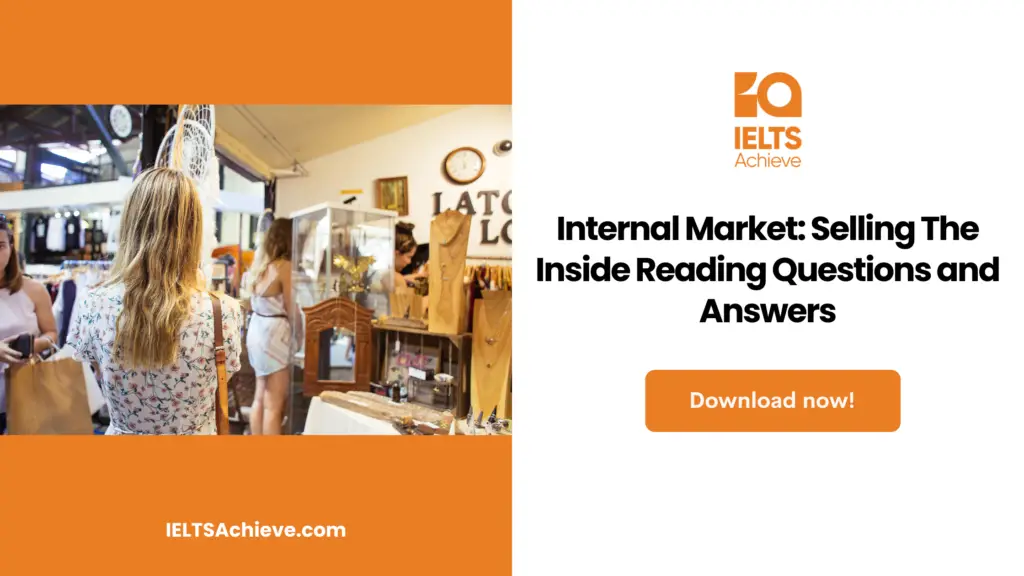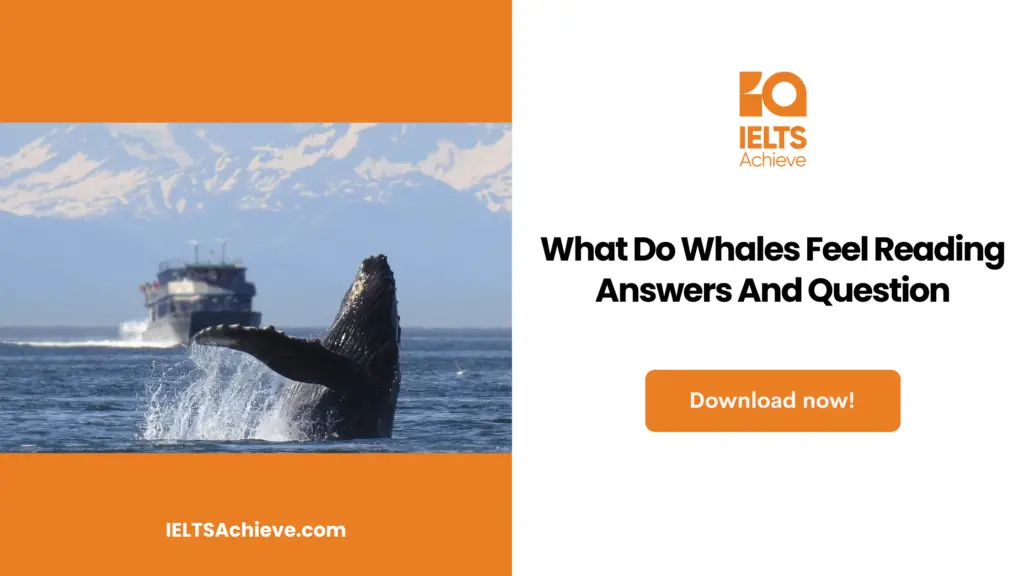The Blog post contains the following IELTS Reading Questions:
- IELTS reading multiple choice questions
- IELTS reading true false not given
- IELTS reading summary completion
Stay informed and prepared for success – Explore our comprehensive Reading Test Info page to get valuable insights, exam format details, and expert tips for mastering the IELTS Reading section.
IELTS reading passage – Titan of Technology

Titan of Technology
Intel, the largest manufacturer of computer chips in the world, owes much of its technological success to the vision of Gordon Moore. Although he is a witty and self-deprecating businessman, he freely admits to being an “accidental entrepreneur,” preferring to stay behind the scenes and talk shop with the engineers rather than face the public or shake hands with the company’s shareholders. After completing his doctorate, he applied for a position at Dow Chemical, where the company psychologist determined that he “would never manage anything” despite his technical competence. In 2018, Intel anticipates a $28 billion revenue year.
Moore was the driving force in research and advancement when he and the extrovert Robert Noyce established Intel (short for Integrated Electronics) to develop integrated circuits 35 years ago; Moore was the quieter, more introverted partner. The culture at Intel was typically Californian: casual and democratic, with an emphasis on polo shirts and chinos. Moore was a typical office worker; he used a cubicle, never had a parking spot, and travelled coach. Nothing here suggests a lack of ambition. Moore and Noyce had a common vision for the company, understanding that in addition to Intel’s technical prowess, its success would require innovative thinking. In 1961, while still a student at Fairchild Semiconductor, Noyce was awarded the first patent for an integrated circuit.
Moore and Noyce became wealthy because of the success of Fairchild, but they were unable to fund any research and development because of this. As a result of their frustration, they left in 1968 to create Intel. It was “one of those unusual opportunities to get your hands on some cash, “Moore explains. With their first $250,000 investment and a “one-page business plan that communicated basically nothing,” they were able to attract $2.5 million in venture money. Funders and founders each hold a 50% stake. After waiting for three years, Intel finally unveiled its 4004 CPU with 2,250 transistors in it. After that, progress accelerated rapidly. Intel had a seven-year research and development advantage over its competitors before they realised what was happening.
Intel’s Pentium-4 chip had 42 million transistors by the year 2000. “Now,” says Moore, “we put a quarter of a billion transistors on a chip, and we’re looking forward to a billion in the near future.” Excellent progress in efficiency has been made. The 4004 operated at 108,000 hertz, or 108 kilohertz, while the Pentium*4 ran at three gigahertz (3 billion hertz). If car speeds had similarly grown during the same time span, it is estimated that you could today drive from New York to San Francisco in just six seconds.
Moore’s foresight in predicting this shift has made him a legend. In 1965, while serving as head of Fairchild’s research and development lab, he wrote an article for Electronics magazine in which he made the following observation: “that over the first four years we had basically quadrupled the complexity of integrated circuits every year.” For the next decade, I extrapolated blindly and predicted that the number of transistors per chip will increase from 60 to 60,000. Because integrated circuits were so expensive and mostly used by the military at the time, this prediction came true much more quickly than I had anticipated. However, I could foresee a huge shift in the economy. One could predict that this would soon be the most cost-effective method of producing electronic devices.
Moore’s Law, which states that the number of transistors in a chip, and hence its performance, will continue to double roughly once every year, was quickly shown so accurately that a Caltech friend of Moore’s, Carver Mead, gave it the name. The moniker has remained. Since then, the exponential growth of the computer industry has been measured in accordance with “Moore’s Law.” When Moore re-evaluated the situation in 1975 and noticed a decline in transistor counts, he predicted that from then on, the performance of chips would only double every two years. However, the prediction turned out to be gloomy. Since then, actual development has been right in the middle of his two forecasts, with performance doubling every 1-8 months.
As Moore also points out, however, there is a corollary.”If the price of a particular quantity of computing power decreases by fifty percent every one to eight months, then the market bursts with new applications that were previously unprofitable.” says one analyst. In his view, the microprocessor has “nearly unlimited elastic” potential.As the price of these gadgets continues to decline, more and more applications are discovered for them, such as smart light bulbs, flashing sneakers, and singing “Happy Birthday” greeting cards. Where is the limit?After a number of additional generations of circuits, the statement “the fact that materials are formed of atoms becomes a significant problem” is validated. You can’t get anything any smaller, really. In reality, though, the inevitable delay occurs because engineers are always coming up with new and better ways to cram more transistors into a device. When we reached the size of a micron (around the year 1986) and were touching the wavelength of light, I think I shared the general consensus that we had to stop. However, when we drew nearer, the barriers collapsed.”
The time for nanotechnology has arrived, as traditional chips have reached their limits. Sci-fi-sounding alternatives are already being developed by scientists, such as molecular computers that are created atom by atom and could theoretically process hundreds of thousands of times more information than today’s processors. To calculate, quantum computers use the quantum properties of electrons, which could allow for much greater speed. Moore’s Law still appears to have a long shelf life by all accounts.
Unlock your full potential in the IELTS Reading section – Visit our IELTS Reading Practice Question Answer page now!
Recommended Questions:
Renewable Energy IELTS Reading Question with Answer
Titan of Technology IELTS Reading Questions
Questions 1-3
Choose the correct option, a, b, c or d. Write your answers in boxes 1-3 on your answer sheet.
1. Is there anything about Gordon Moore’s character that can be determined from the first two paragraphs?
- There has been a radical shift in it as his career has progressed.
- Previously, it was deemed inappropriate for the industry he worked in, therefore it was removed from consideration.
- It shaped him into someone who is better at manufacturing than selling.
- It’s not as hard as it seems at first glance.
2. What did we find out about Intel back when it was originally created?
- In contrast to its competitors, it was completely unique.
- It had an easygoing vibe but a serious purpose.
- It was unusual in its management style, and that made it stand out.
- This method rewarded originality more than any other quality.
3. In the third paragraph, what information concerning Intel’s founding is presented?
- The availability of resources was a major driving factor.
- Involved keeping some details under wraps.
- It was motivated by the founders’ need to get a certain product to market.
- Its inception can be traced back to the founders’ frustration with their company’s prioritisation strategies.
Ready to improve your performance in Multiple Choice Questions (MCQs)? Click here to access our comprehensive guide on how to tackle MCQs effectively in the IELTS Reading section.
Questions 4-8
Are the following claims accurate with the passage’s information? Write
TRUE if the statement agrees with the information
FALSE if the statement contradicts the information
NOT GIVEN if there is no information on this
4. Soon, rivals came close to catching up with Intel’s advancements.
5. Moore had underestimated the success of Intel’s Pentium 4 chip.
6.The forecast made by Moore in 1975 was based on insufficient evidence.
7. Flashing trainers illustrate Moore’s theory regarding the relationship between price and utility.
8. Moore has always been convinced that issues regarding the sire of components can be resolved.
Enhance your skills in identifying information as True, False, or Not Given. Click here to discover expert strategies and techniques for mastering this question type in the IELTS Reading section.
Questions 9-14
Complete the summary using the words provided. Fill in your responses in boxes 9 – 14 on the answer sheet.
Gordon Moore’s capacity to predict future events is well-known. In 1965, he mentioned the expansion of 9__________of integrated circuits and predicted that the number of transistors will continue to rise over the next decade. The 10 _________ of his forecasting astonished him. Prior to now, the 11_________ and primary 12____________ of integrated circuits were the key 13 _________ for their development. Moore, however, anticipated that the 14 _________ of integrated circuits would improve rapidly. Moore’s Law was coined as a result of his subsequent observations regarding chips.
| Design | Use | Opinion | Invention |
| Cost-effectiveness | Failure | Sophistication | Proposition |
| Production | Influence | Understanding | Cost |
| Accuracy | Demand | Theory | Inter-dependence |
| Familiarity | Reception | Appearance | Refere |
Boost your performance in Summary, Notes, Table, and Flowchart Completion tasks. Click here to explore our detailed guide and learn how to effectively complete summaries, notes, tables, and flowcharts in the IELTS Reading section.
Unlock your full potential in the IELTS Reading section – Visit our IELTS Reading Practice Question Answer page now!
Recommended Questions:
Renewable Energy IELTS Reading Question with Answer
Titan of Technology reading answers
1. c
2. b
3. d
4. False
5. Not Given
6. Not Given
7. True
8. False
9. Sophistication
10. Accuracy
11. Cost
12. Use
13. Influence
14. Cost-effectiveness

We hope you found this post useful in helping you to study for the IELTS Test. If you have any questions please let us know in the comments below or on the Facebook page.
The best way to keep up to date with posts like this is to like us on Facebook, then follow us on Instagram and Pinterest. If you need help preparing for the IELTS Test, join the IELTS Achieve Academy and see how we can assist you to achieve your desired band score. We offer an essay correction service, mock exams and online courses.

